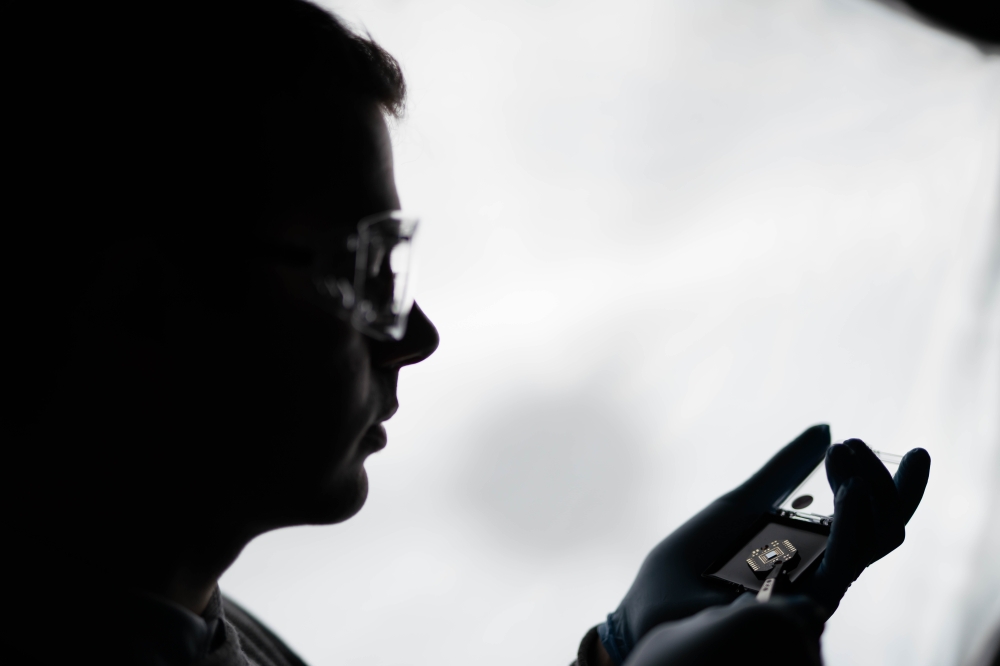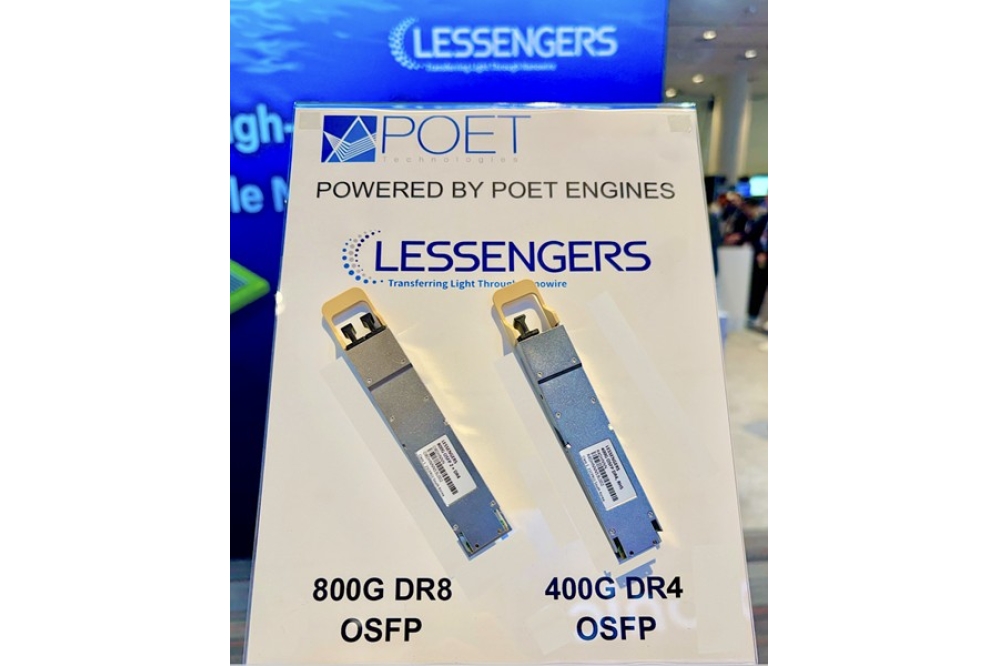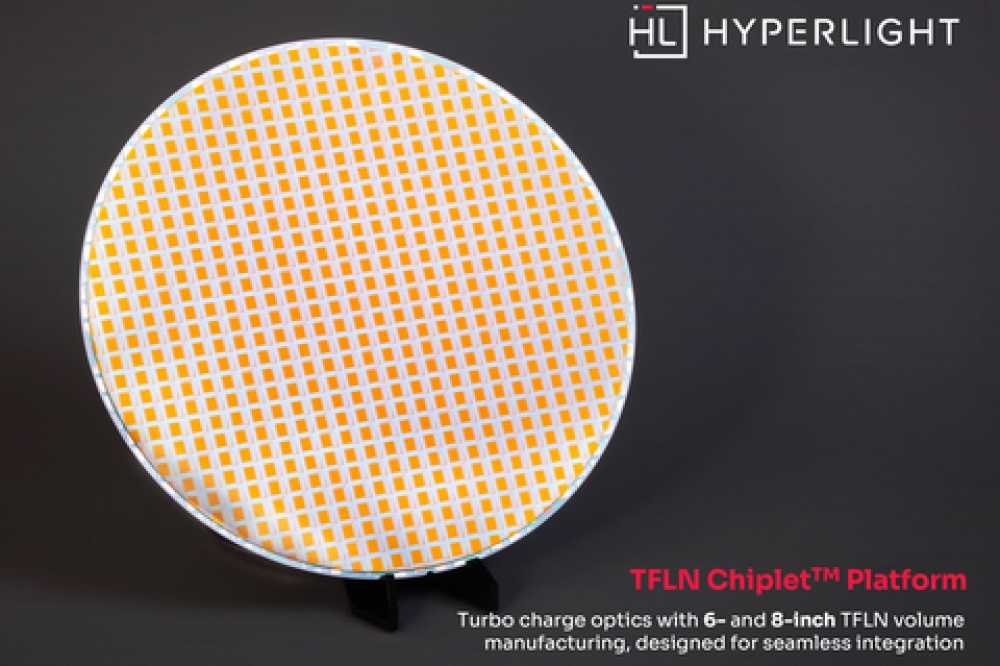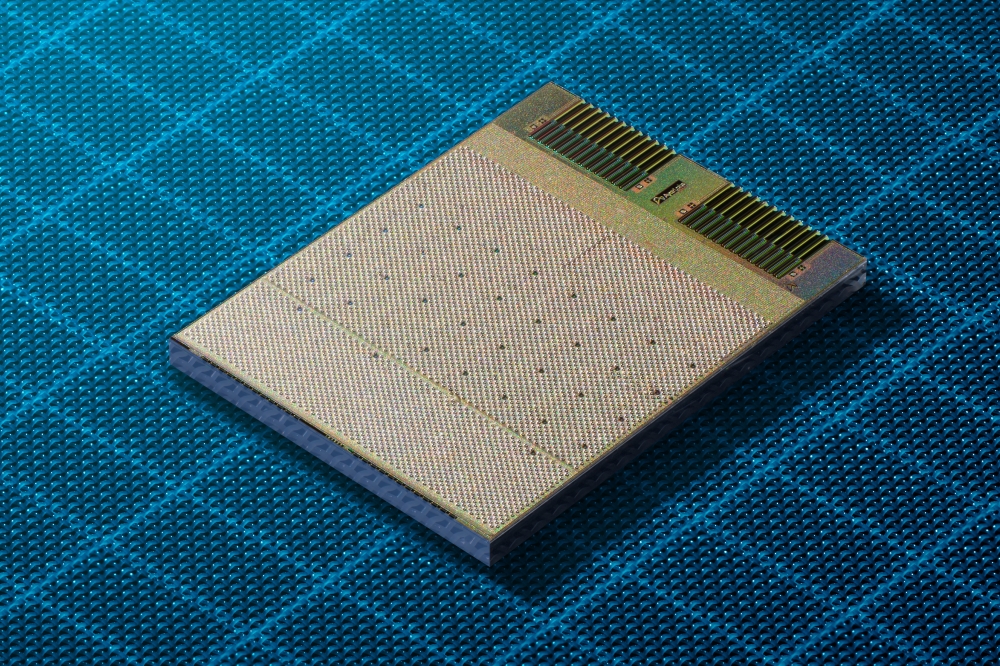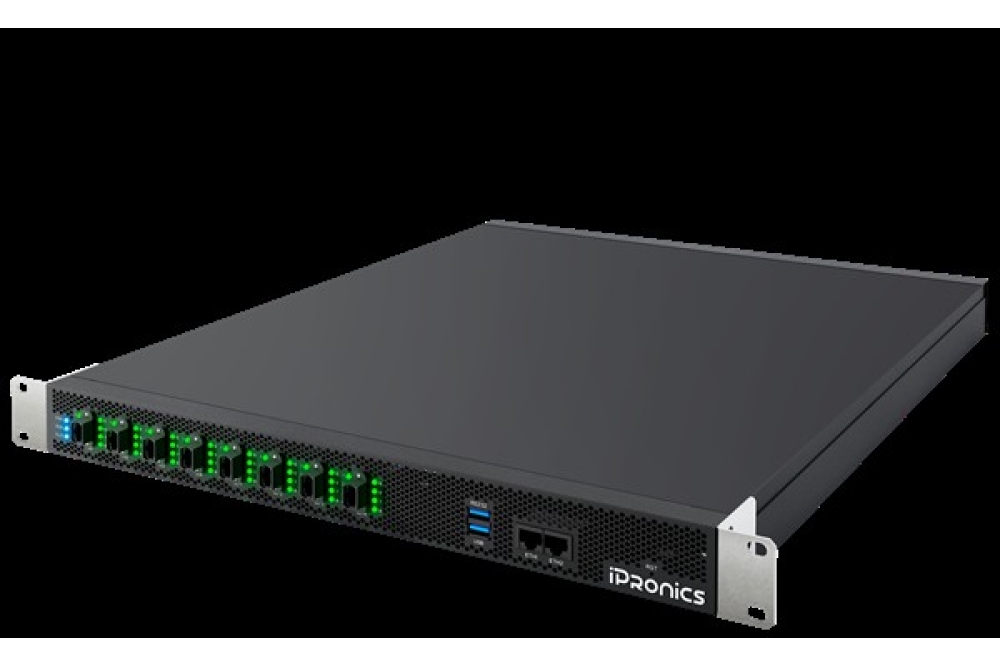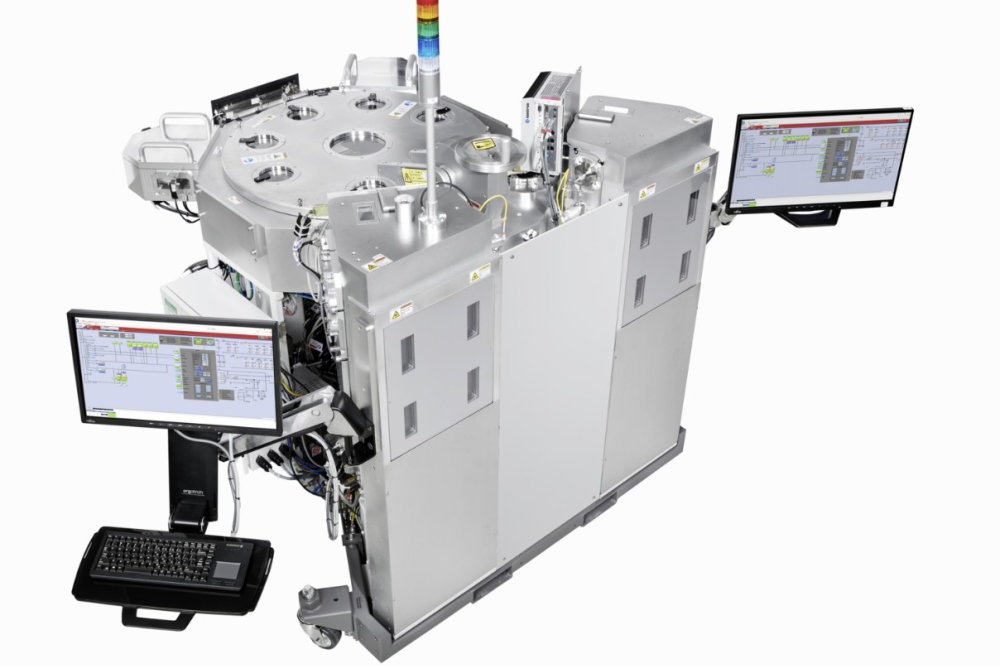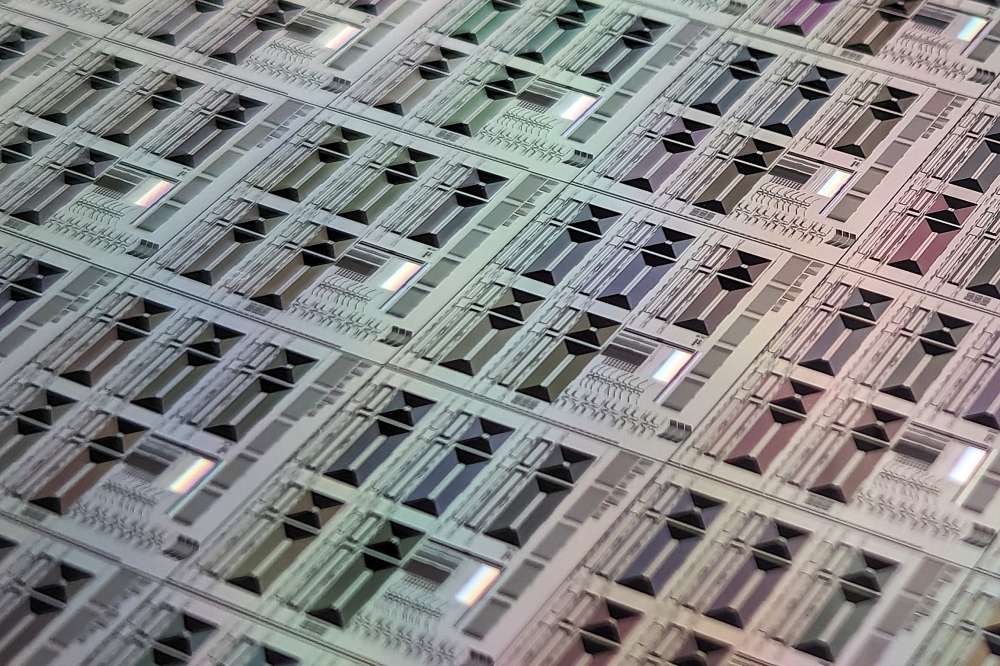An on-chip, mid-infrared pulse generator

Researchers have created an on-chip laser that emits extremely bright, short pulses of light in the mid-infrared, a wavelength range that has applications in sensing and spectroscopy, but which has previously been challenging to miniaturise light sources for
Physicists in the Harvard John A. Paulson School of Engineering and Applied Sciences (SEAS) have published a new paper in Nature reporting the first demonstration of an on-chip, picosecond, mid-infrared laser pulse generator that requires no external components to operate.
The device can make what’s called an optical frequency comb, a spectrum of light consisting of equally spaced frequency lines, used today in precision measurements. The new laser chip could one day speed the creation of highly sensitive, broad-spectrum gas sensors for environmental monitoring, or new types of spectroscopy tools for medical imaging.
Supported by the National Science Foundation and the Department of Defense, the research was a collaboration with the Schwarz group at Vienna University of Technology (TU Wien); a consortium of Italian scientists led by Luigi A. Lugiato; and Leonardo DRS Daylight Solutions led by Timothy Day.
“This is an exciting new technology that integrates on-chip nonlinear photonics to generate ultrashort pulses of light in the mid-infrared; no such thing existed until now,” said Capasso, who is senior author of the paper, Robert L. Wallace Professor of Applied Physics at SEAS and Vinton Hayes Senior Research Fellow in Electrical Engineering. “What’s more, such devices can be readily produced at industrial laser foundries using standard semiconductor fabrication.”
The mid-infrared is an invisible section of the electromagnetic spectrum that is leveraged today in environmental applications. Because many gas molecules like carbon dioxide and methane absorb mid-infrared light efficiently, this wavelength range has been an important tool in monitoring environmental gases, notably with quantum cascade laser technology that was pioneered by Capasso in the 1990s.
The scientists say the new paper demonstrates a path to generating a broadband light source that could detect, for example, many different absorption fingerprints of gases in a single device.
“It’s a key step to creating what we call a supercontinuum source, which can generate thousands of different frequencies of light, all in one chip,” said Dmitry Kazakov, co-first author and research associate in Capasso’s group. “I think that’s a real possibility for the future of this platform.”
Fundamental to the new feat of nanophotonic engineering is the quantum cascade laser, which generates coherent beams of mid-infrared light by layering together different nanostructured semiconductor materials. Unlike other semiconductor lasers that have relied for decades on well-established techniques called mode-locking to generate their pulses, quantum cascade lasers remain notoriously difficult to pulse due to their inherently ultra-fast dynamics. Existing mid-infrared pulse generators based on quantum cascade lasers typically require complex setups to achieve pulsed emission as well as many discrete hardware components. They are also generally limited to a certain output power and spectral bandwidth.
According to the researchers, the new pulse generator seamlessly combines, into a single device, several concepts in nonlinear integrated photonics and integrated lasers to make specific types of picosecond light pulses called solitons. In designing their chip architecture, the researchers took inspiration from a seemingly unrelated type of light-modulating device called a Kerr microresonator. Their approach allowed them to skirt traditional techniques, like mode-locking, for pulse generation.
“Our measurements were non-traditional when it came to quantum cascade laser research,” said co-first author Theodore Letsou, a graduate student at MIT and research fellow in Capasso’s group. “We merged two types of fields and took what the Kerr resonator community does and applied it to our systems. That was an exciting process.”
Co-author Benedikt Schwarz, professor at TU Wien, commented: “For me, the most significant impact of our new work – beyond the impressive physics – is the confidence it has given us in fabricating and operating multicomponent architectures, which is a capability that had remained a major challenge in mid-infrared integrated photonics until now. We’re already developing new architectures to enable functionalities previously thought impossible.”
The researchers drew on a foundational theory published in the 1980s that established a framework for passive Kerr resonators. One of the new paper’s co-authors is Luigi Lugiato, who worked on repurposing his original equation to describe the dynamics of the mid-IR laser system.
“This is an exciting culmination of a journey that began with the Lugiato-Lefever equation,” said Lugiato, professor emeritus at University of Insubria, Italy. “What started as a model for passive systems has evolved into a unified framework for soliton frequency combs in all kinds of cavities. That path led us to predict solitons in optically driven quantum cascade lasers above threshold – now confirmed by this experiment.”
The team say the new mid-infrared laser can reliably maintain pulse generation for hours at a time. Crucially, it can also be mass-produced using existing industrial fabrication processes, which could greatly increase the speed of its widespread adoption, they add. The device is made of a ring resonator that can be externally driven; an on-chip laser that drives the ring resonator; and a second active ring resonator that acts as a filter. The chips were made at TU Wien.
“This technology promises to be a real game-changer in the field of mid-infrared spectroscopy,” said co-author Timothy Day, senior vice president and general manager of Leonardo DRS’ Daylight Solutions business unit. “The ability to leverage existing fabrication processes to produce these devices in commercial volumes could really enable what’s next in several markets, including environmental monitoring, industrial process control, life sciences research and medical diagnostics.”








